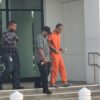AMONG the sea of names that adorn war memorials around the world are men, women, and children whose lives were tragically cut short. Footnoted in the annals of history and often forgotten by the passage of time are the personalities, dreams, goals, and accomplishments that defined these individuals and that impacted those who knew them.
In many cases, soldiers joined or were recruited at a young age and never had the opportunity to create their own legacies — direct descendants who might fondly recall their personalities, continue those dreams, achieve those goals, and benefit from those accomplishments. History is replete with battles that ended such possibilities.
World War II’s Battle of Saipan was one of many such conflicts. From June 15 to July 9, 1944, the U.S. invasion, beach landings, and ultimate capture of the Japanese island of Saipan took place. The United States suffered losses of approximately 3,000 killed and 13,000 wounded. Over 929 Chamorros and Carolinians died as a result of the war, along with more than 8,500 Japanese, Korean, and Okinawan civilians, and approximately 29,000 military personnel. (Exact numbers vary by source; research is ongoing.)
Among those killed in battle on the U.S. side was Corporal Joseph “Joe” Matthews Crnkovic¹ (pronounced sank’-o-vick) of the 2nd Marine Division (E Company, 2nd Battalion, 8th Marines; E/2/8) from Louisiana, who lost his life at the age of 21. The number of those who knew him directly during that time were likely very small.
Two generations later, however, Griffin Sava, Joe’s grandnephew (the grandson of Joe’s youngest sister, Lois), would make it his mission to serve as the keeper of the family history and bring Joe’s life to awareness.
On a recent pilgrimage to the CNMI, Griffin and his father, Ken, toured Saipan and Tinian — visiting the landing beaches, structures, relics, and memorials that these islands host. Griffin shared with me the following — a letter postmarked 1945 from Sgt. Bobbie McGuire. The letter, written after an initial communication with Joe’s mother is addressed to Joe’s younger brother, Steve Crnkovic, and recounts McGuire’s recollection of meeting Joe between campaigns, the battle itself, and Joe’s final moments.
[BEGIN LETTER; PAGE 1]
[Naval Air Training Center, Pensacola, Florida – Letterhead]
Marines Barracks
U.S. Naval Air Station
Pensacola, Fla.
Steve,
Yes, I know a bit more about Joe than I told your mother. I couldn’t exactly tell her how he died. You want the story, here you go.
Joe joined our outfit in New Zealand, where we were resting after [the battle of] Guadalcanal. We were just plain infantry. At Tarawa, we landed in LVTs (amphibious assault vehicles). Joe was in my amtrack (amphibious tractor). I was a CPL [Corporal] then. He sure was a darn swell guy in action and brave as hell. We stayed there three days, on the second I was hit and evacuated, but I do know he got quite a few Japs. From there, they went to Hawaii. I came out of the hospital and rejoined them. We were replaced for the many men we lost and began training. We were fixed into rifle squads of 13 men, a Sgt. in charge, then three group leaders and CPLs, each having three men, each forming a combat team.
On May 15th, we boarded an—
[PAGE 2]
L.S.T. [Landing Ship Tank] and started for Saipan, enroute we made practice landings. On June 15th we once more went in the first wave of the assault. Sgt. Shulko as squad leader, Joe in charge of first group, Cpl. Kreiner had the 2nd, and I the 3rd. Upon hitting the beach we were under artillery fire from the hills, also heavy mortar fire. We began moving up, our squad got separated, but later we found our way back. Later, after heavy fighting, we moved through the town of Garapan. We killed an estimated 500 Japs with the loss of Cpl. Kreiner, and two others in our squad. It was late one night, about three o’clock Joe and I combined our men as the left was wounded, and dug foxholes in a circular formation, keeping two men on watch at all times. The whole regiment was spread out on the front. What few was left. A counterattack started and we opened fire. Our company took the blunt [sic]—
[PAGE 3]
…of the attack. They got too damn close and we started using bayonets. I seen Joe get four, as he was next to me. Joe was hit already, in the shoulder but kept fighting. I don’t know how many more Japs he got, then I caught a bayonet in my leg. When we beat them off, Joe had caught a dum dum² in the stomach, medical aid couldn’t do him any good. He died five minutes or so later. And that’s the story Steve as I seen it. I’m proud as hell to have fought with him. He died smiling.
I’m stationed 57 miles from home until June, then I’m going back over, and I’ll help even the score for Joe and the many other close friends we lost.
I ask you not to let this get too far, as some of the information we aren’t supposed to let out, you understand, as for type of ship and time of departure.
Write me again Steve, and good hunting to you,
Bob
[END OF LETTER]
I asked Griffin Sava about Bobbie’s “Good hunting” closing. Griffin explained, “I believe he was referring to hunting the enemy. This was a common practice in the Pacific Theater. It was a much more brutal campaign than in Europe, and dehumanizing the enemy often made it easier for soldiers, sailors, and Marines to cope. Steve was in the Army Air Corps, and at the time of the letter (postmarked January 25, 1945), he was still stationed on the mainland U.S.”
After the war, those who survived and knew the fallen provided a vital link between them and their families. This letter likely offered the closure that Joe’s family was seeking after the loss of a brother and son.
Griffin is continuing his research through the National Archives and other sources. You may contact the family through Griffin at savagm18@gmail.com. For similar pilgrimages by the relatives of Battle of Saipan veterans and more photos and details of the Battle of Saipan from Griffin’s research, see the “Saipan History, WWII & Culture” playlist on the DiscoverSaipan YouTube channel: https://www.youtube.com/@discoversaipan and https://www.discoversaipan.com/blog/.
Footnotes
¹The Crnkovic family originated from Yugoslavia (now Croatia). Ed (Joe’s father) moved to Louisiana, met his wife, and settled in Zwolle, Louisiana, near Shreveport.
²Joe had two brothers in the service: Steve, who served in the Army Air Corps, and Johnny, who was in the 65th Infantry Division, which broke through the Siegfried Line in Europe in 1945.
³A “dum dum” is a type of expanding bullet designed to increase in diameter and inflict a larger wound on impact. The term comes from Dum Dum, an Indian town near Kolkata, where the bullets were first manufactured.

Ken, left, and Griffin Sava at Saipan’s American Memorial Park’s Court of Honor, viewing the names of the 5,204 U.S. servicemen who died in the Battles of Saipan, Tinian, and the Philippine Sea. Since the memorial’s construction, additional names have been submitted. Research is ongoing to include names not currently listed.

Ken Sava points to the name “Crnkovic, Joseph Matthews CORP” on the plaque at American Memorial Park’s Court of Honor.

Griffin and Ken Sava discover the beauty and culture of the island with the author, Walt Goodridge.
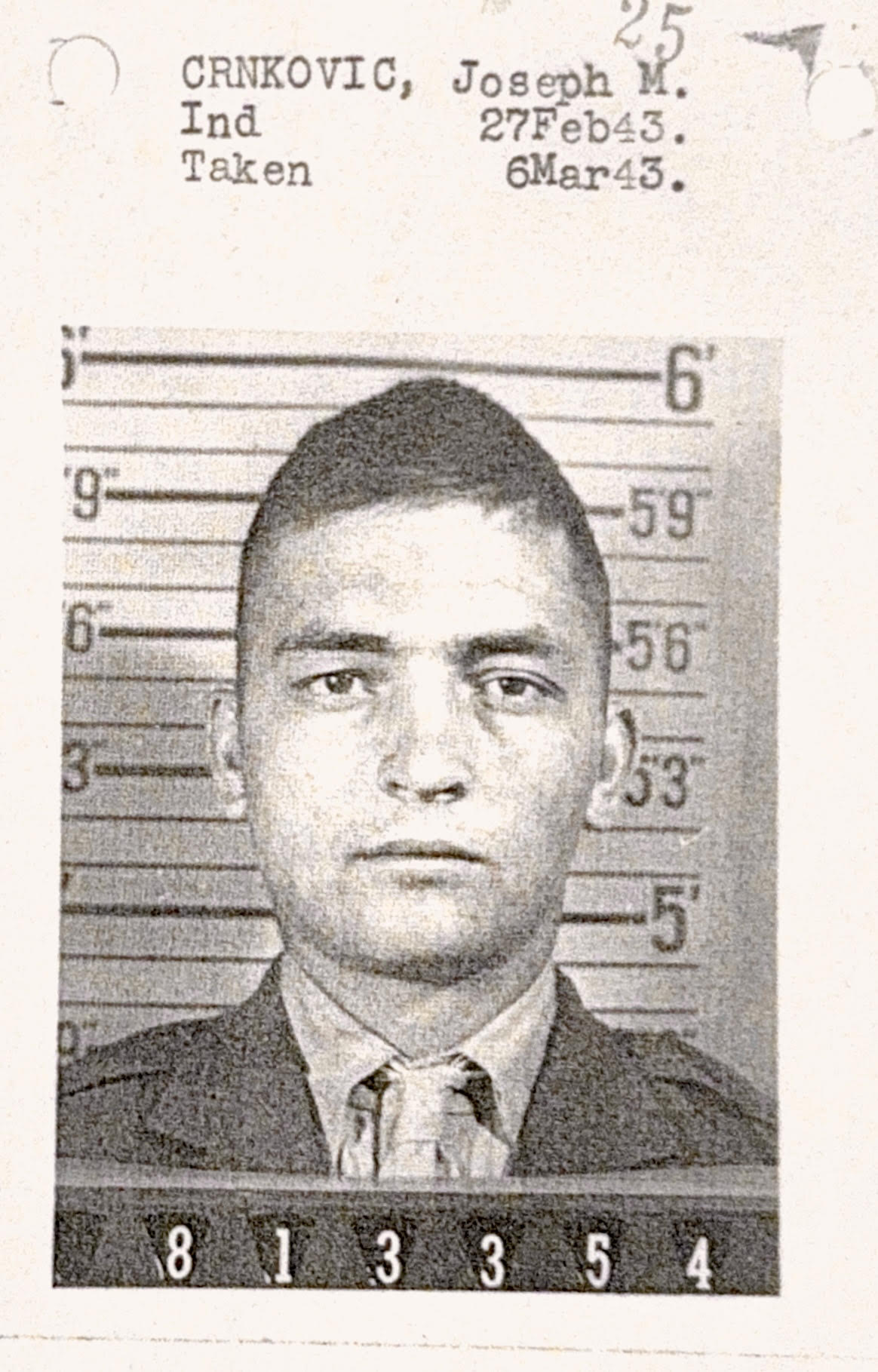
Joseph Matthews Crnkovic’s enlistment photo
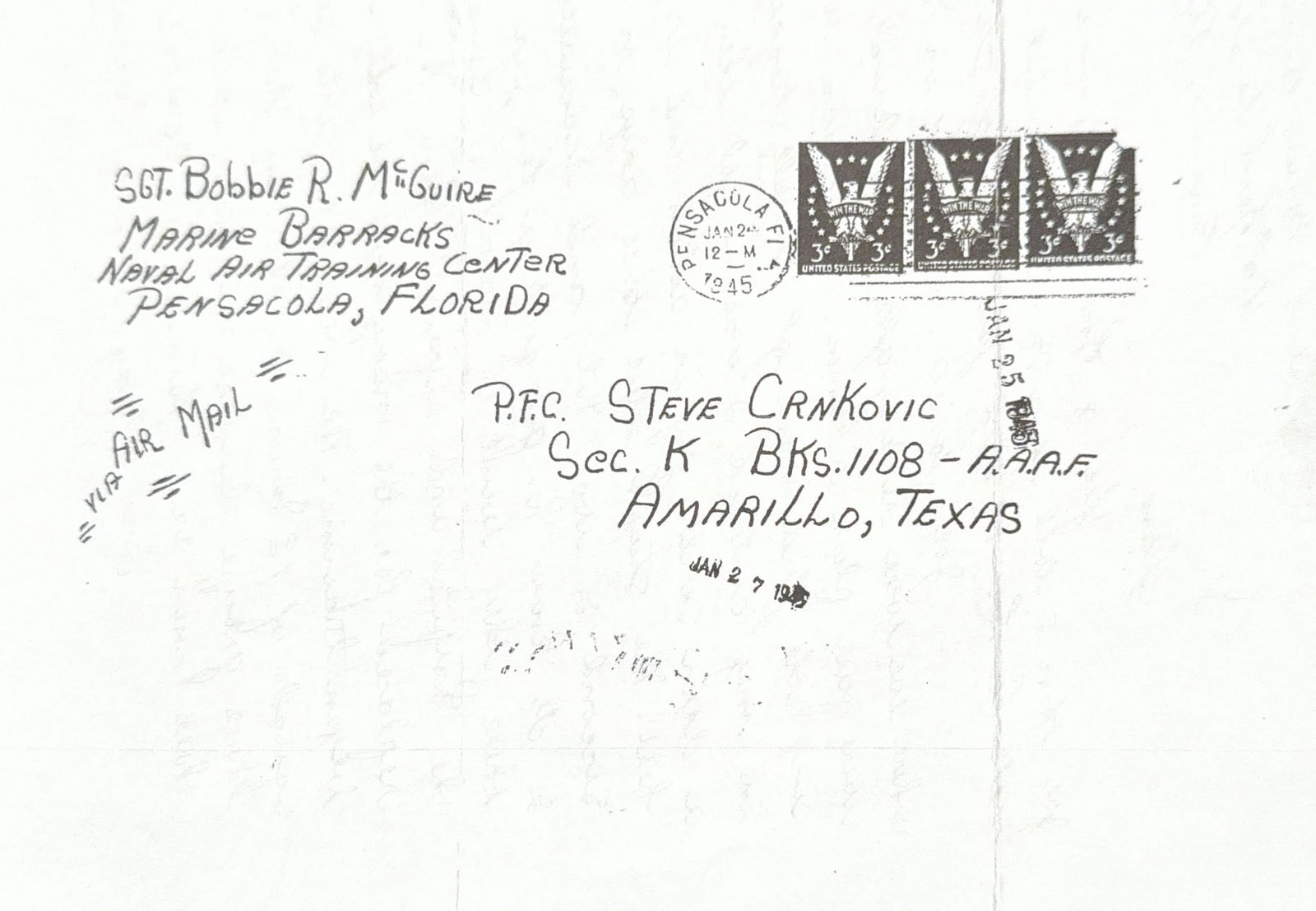
Image of envelope from Bobbie McGuire, postmarked January 25, 1945.
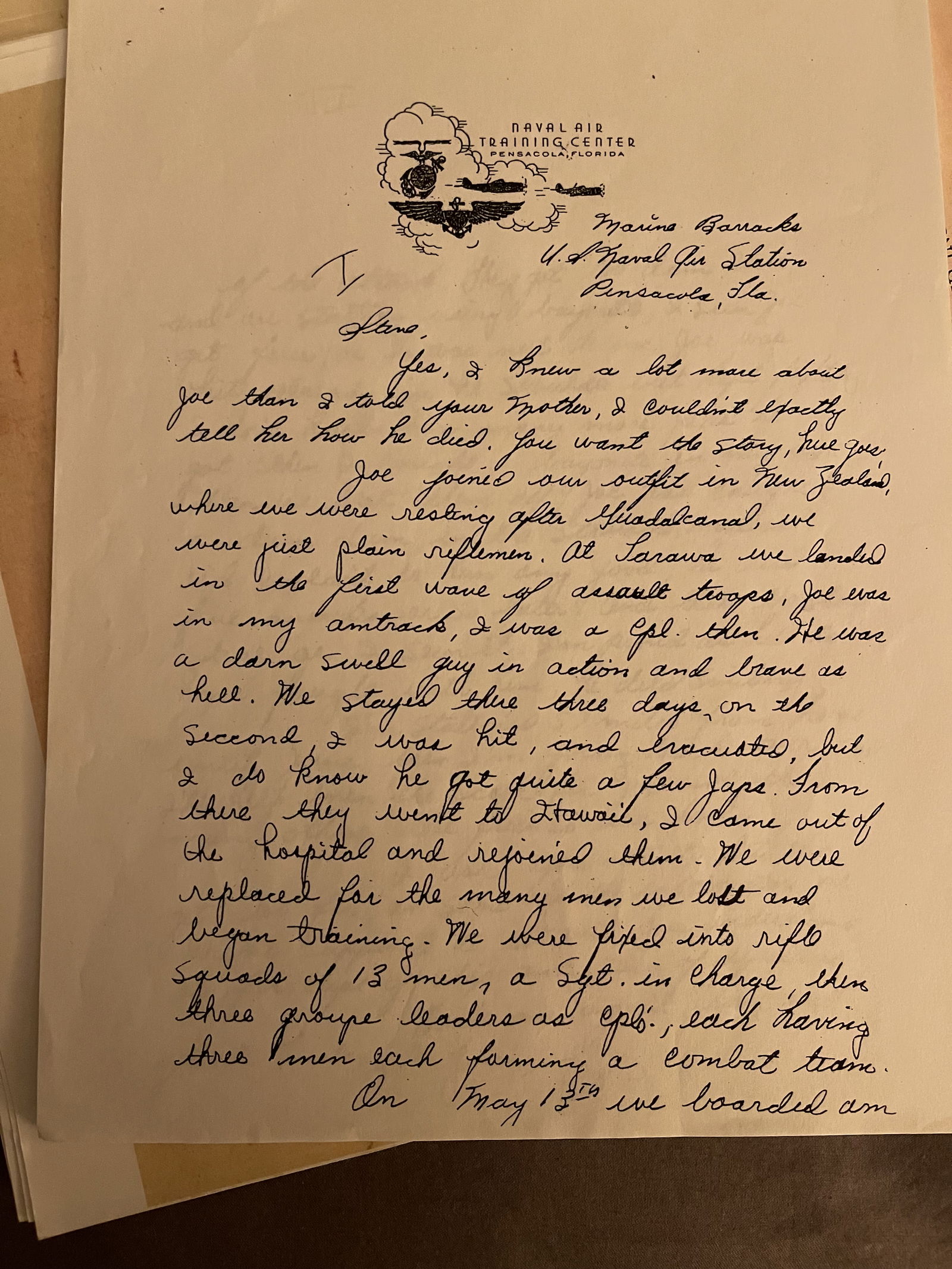
page 1 of the letter

page 2 of the letter
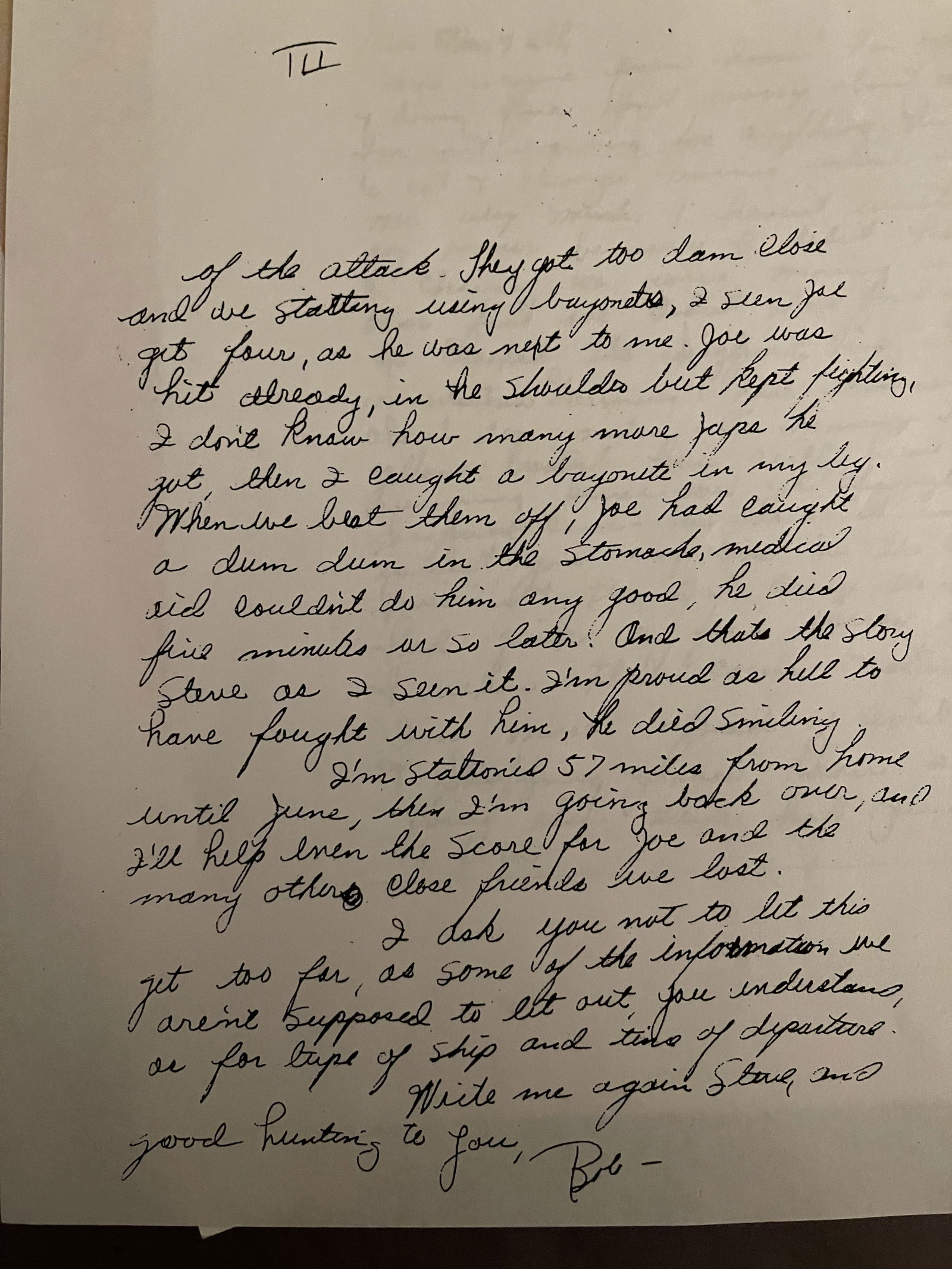
page 3 of the letter



